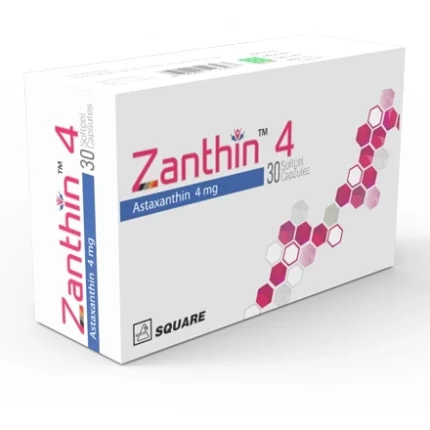Diasulin R 100IU
415.00৳ Vial(10ml)
- Diasulin R Injection is used for the treatment of type 1 and type 2 diabetes, gestational diabetes, and stabilization during diabetic emergencies.
- It contains Insulin Human (rDNA) in two concentrations: 40 IU/ml and 100 IU/ml.
- The medication lowers blood glucose levels by facilitating glucose uptake in muscle and fat cells and inhibiting glucose output from the liver.
- Common side effects include hypoglycemia and lipodystrophy; dosage and administration should be tailored by a healthcare professional.
 Brand
Brand
|
ACI Limited |
|---|---|
 Generics
Generics
|
Insulin Human [rDNA] |
 Type
Type
|
SC Injection |
Indications
- Type 1 Diabetes Management: Effective for all patients with type 1 diabetes.
- Type 2 Diabetes: For patients who do not achieve sufficient control with diet and/or oral hypoglycemic agents.
- Diabetic Emergencies: Used for initial stabilization in cases of diabetic ketoacidosis, hyperosmolar non-ketotic syndrome, and during stressful conditions such as severe infections or major surgeries in diabetic patients.
- Gestational Diabetes: Suitable for managing diabetes during pregnancy.
Note: Always follow the advice of a registered healthcare professional when using this medication.
Composition
Diasulin R contains the following active ingredients:
- Insulin Human R (40 IU/ml): Each milliliter contains 40 IU (1.388 mg) of Insulin Human (rDNA), formulated as Soluble Insulin Human (Regular).
- Insulin Human R (100 IU/ml): Each milliliter contains 100 IU (3.47 mg) of Insulin Human (rDNA), formulated as Soluble Insulin Human (Regular).
- Insulin Human N (40 IU/ml): Each milliliter contains 40 IU (1.388 mg) of Insulin Human (rDNA), formulated as Isophane Insulin Human.
- Insulin Human N (100 IU/ml): Each milliliter contains 100 IU (3.47 mg) of Insulin Human (rDNA), formulated as Isophane Insulin Human.
Pharmacology
Diasulin R is a clear, sterile solution of Insulin Human, classified as fast-acting insulin. It has a short duration of action compared to other insulin forms and can be combined with long-acting insulins. It works by promoting glucose uptake in muscle and fat cells and inhibiting glucose production by the liver.
- Onset of Action: Begins within 30 minutes.
- Peak Plasma Levels: Occurs between 1-3 hours.
- Duration of Action: Lasts approximately 4-6 hours.
Insulin has a very short half-life in the bloodstream and minimal binding to plasma proteins.
Dosage
The appropriate dosage is individualized and determined by your healthcare provider based on your specific needs.
- Type 1 Diabetes: Typically requires 0.5 to 1.0 IU/Kg daily for maintenance therapy. For children, this may range from 0.7 to 1.0 IU/Kg.
- Type 2 Diabetes: The initial dose is generally lower, ranging from 0.3 to 0.6 IU/Kg/day.
A meal containing carbohydrates should be taken within 30 minutes of each injection.
Note: Always follow the advice of a registered healthcare professional when using this medication.
Administration
- Subcutaneous Injection: Typically administered in the abdominal area, though the thigh, gluteal, or deltoid regions can also be used. The abdomen allows for faster absorption.
- Injection Site Rotation: To prevent lipodystrophy, it is important to rotate the injection sites within the same anatomical region.
- Intramuscular and Intravenous Injections: Should only be done under the guidance of a healthcare provider.
Dosage Adjustments
Changes in insulin requirements may occur due to:
- Illnesses (infections, fever): These conditions typically increase insulin needs.
- Renal or Hepatic Impairment: May reduce the need for insulin.
- Physical Activity or Diet Changes: May necessitate dose adjustments.
- Switching Insulin Types or Brands: Requires dosage modification under medical supervision.
Note: Always follow the advice of a registered healthcare professional when using this medication.
Interactions
- Reduced Insulin Requirement: Oral hypoglycemic agents, MAO inhibitors, beta-blockers, ACE inhibitors, salicylates, and alcohol may lower insulin needs.
- Increased Insulin Requirement: Thiazides, glucocorticoids, thyroid hormones, beta-sympathomimetics, growth hormones, and danazol may increase insulin needs.
Important Note: Beta-blockers can mask hypoglycemia symptoms and delay recovery. Alcohol may intensify and prolong the effects of insulin. Octreotide/lanreotide can either increase or decrease insulin needs.
Contraindications
Diasulin R should not be used in patients with:
- Hypoglycemia: Do not administer during low blood sugar episodes.
- Hypersensitivity: Avoid use in patients allergic to human insulin or any excipients in the formula.
Side Effects
The most common side effect of insulin therapy is hypoglycemia, typically occurring when insulin doses exceed requirements. Other side effects may include:
- Lipodystrophy: Results from not rotating injection sites.
- Hypersensitivity Reactions: Symptoms may include skin rash, itching, gastrointestinal upset, and more severe reactions such as difficulty breathing or reduced blood pressure.
- Edema: Can occur when starting insulin therapy, but usually resolves over time.
Pregnancy & Lactation
- Pregnancy: Insulin use during pregnancy is safe, as it does not cross the placental barrier. However, insulin requirements may change during pregnancy and after delivery, and adjustments are necessary.
- Lactation: Insulin treatment does not pose a risk to breastfeeding infants, though adjustments to dosage or diet may be required.
Precautions & Warnings
- Hyperglycemia Risk: Failure to properly dose insulin, especially in type 1 diabetes, can lead to dangerous conditions like diabetic ketoacidosis.
- Hypoglycemia Risk: Can occur if the insulin dose exceeds the body’s needs.
- Switching Insulin Products: Any changes in insulin type or brand should be done under strict medical supervision.
Overdose Effects
- Mild Hypoglycemia: Can be managed by consuming glucose or sugary products.
- Severe Hypoglycemia: Requires medical intervention, such as glucagon or intravenous glucose, especially if the patient is unconscious.
Therapeutic Class
Medium-acting insulin.
Storage Conditions
- Refrigeration: Store between 2°C and 8°C. Do not use if frozen.
- During Use: Once opened, store at room temperature (below 25°C for up to 6 weeks or below 30°C for 4 weeks). Protect from light and heat.













Reviews
There are no reviews yet.